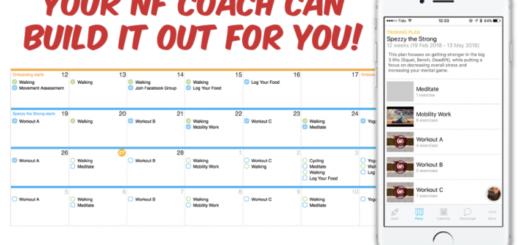Mindfulness exercises
If you’re looking to enhance your overall well-being and cultivate a sense of inner peace, then mindfulness exercises might just be the answer you’re looking for. In a world that constantly bombards us with distractions and demands on our attention, it can be challenging to stay present and grounded. Luckily, mindfulness exercises offer a range of techniques that can help you cultivate a greater sense of awareness, reduce stress, and improve your overall mental and emotional well-being. From meditation techniques to stress relief methods and sleep hygiene tips, there are numerous ways to incorporate mindfulness into your daily routine. So, why not give it a try and see the positive impact it can have on your life?
Mindfulness exercises
What is Mindfulness?
Mindfulness is the practice of being fully present and aware of the current moment. It involves paying attention to your thoughts, emotions, sensations, and surroundings without judgment. Mindfulness can be cultivated through various exercises and techniques that help you develop a deeper sense of self-awareness and a better understanding of your inner experiences.
Benefits of Mindfulness Exercises
Engaging in mindfulness exercises can have numerous benefits for your mental, emotional, and physical well-being. These practices can help reduce stress and anxiety, improve focus and concentration, enhance self-compassion, and promote a greater sense of overall happiness and contentment. By incorporating mindfulness into your daily life, you can develop better coping mechanisms, increase resilience, and improve your relationships with others.

1. Mindful Breathing
Mindful breathing is a simple yet powerful exercise that can be done anywhere, anytime. Start by finding a comfortable sitting position or even lying down. Close your eyes and bring your attention to your breath. Notice the sensation of the breath as it enters and leaves your body. Focus on the rising and falling of your abdomen or the gentle flow of air in and out of your nostrils. Whenever your mind starts to wander, gently bring your attention back to the breath. Practice this exercise for a few minutes each day to cultivate a sense of calm and relaxation.
2. Body Scan Meditation
The body scan meditation is a practice that involves systematically directing your attention to different parts of your body, from head to toe. Find a quiet and comfortable place to lie down or sit. Close your eyes and begin by bringing your attention to your feet. Notice any sensations, tension, or discomfort in this area without judgment. Slowly move your attention up through your legs, hips, abdomen, chest, arms, and head, taking note of any sensations or areas of tension. This exercise helps you develop a greater awareness of your physical body and promotes relaxation and a sense of grounding.

3. Mindful Eating
Mindful eating is a practice that involves paying full attention to the experience of eating, without distractions or judgment. Before you begin your meal, take a moment to appreciate the colors, smells, and textures of the food in front of you. Chew slowly and savor each bite, noticing the flavors and sensations in your mouth. Pay attention to your body’s hunger and fullness cues, and eat until you feel satisfied, not overly full. This exercise can help you develop a healthier relationship with food, enjoy your meals more fully, and prevent overeating.
4. Loving-Kindness Meditation
Loving-kindness meditation is a practice that involves cultivating feelings of love, compassion, and goodwill towards yourself and others. Find a comfortable sitting position and close your eyes. Bring to mind someone you love or care deeply about. Repeat the following phrases silently or out loud: “May you be happy. May you be healthy. May you be safe. May you live with ease.” Extend these well-wishes to yourself, a neutral person, and even someone you may be having difficulties with. This exercise helps foster feelings of kindness, empathy, and connection.
5. Mindful Walking
Mindful walking is a way to bring mindfulness into your daily activities and take a break from the busyness of life. Find a quiet and preferably natural setting for your walk. As you walk, pay attention to the physical sensations of each step, the movement of your body, and the sounds and sights around you. Engage your senses and be fully present in the experience of walking. If your mind starts to wander, gently bring your attention back to the act of walking. This exercise helps bring a sense of calm and awareness to your surroundings.
6. Gratitude Practice
Gratitude practice involves consciously acknowledging and expressing gratitude for the things you appreciate in life. Take a few moments each day to reflect on what you are grateful for. It could be something as simple as a sunny day or a kind gesture from a friend. Write these things down in a gratitude journal or simply say them out loud. By focusing on the positives in your life, you can shift your perspective and cultivate a greater sense of gratitude and contentment.
7. Mindful Journaling
Mindful journaling is a practice that combines mindfulness with the act of writing. Set aside some time each day to sit down with your journal. Start by bringing your attention to your breath and grounding yourself in the present moment. As you begin to write, allow your thoughts and emotions to flow onto the paper without judgment or self-editing. Use this space to explore your feelings, reflect on your experiences, and gain insight into your thoughts and behaviors. This practice can be a valuable tool for self-discovery, stress relief, and personal growth.
8. Mindful Listening
Mindful listening is the practice of fully engaging with and being present for the person or people you are communicating with. When engaged in a conversation, give your full attention to the speaker. Avoid interrupting or formulating responses in your mind while they are talking. Instead, focus on truly understanding their words, feelings, and intentions. Practice non-judgment and empathy, and respond with openness and curiosity. Through mindful listening, you can cultivate deeper connections, build trust, and enhance your communication skills.
9. Mindful Visualization
Mindful visualization is a technique that involves using your imagination to create vivid mental images of positive and calming scenes. Find a quiet and comfortable space and close your eyes. Take a few deep breaths to relax your body and mind. Begin to visualize a place that brings you peace and tranquility. It could be a beach, a forest, or a cozy room. Engage all your senses in this visualization, imagining the sounds, smells, and sensations of being in that space. This exercise can help reduce stress and anxiety, promote relaxation, and enhance your overall well-being.
Incorporating mindfulness exercises into your daily routine can have a profound impact on your mental and emotional well-being. By taking the time to cultivate awareness and presence, you can experience greater peace, happiness, and overall life satisfaction. So, whether you choose to practice mindful breathing, body scan meditation, or any other exercise, remember to approach it with an open mind and a friendly attitude towards yourself. Happy mindfulness!
















It's great that you talked about how business insurance can provide financial protection against unexpected events and help ensure the…
I like that you mentioned how business insurance is essential for protecting your bottom line and the long-term viability of…